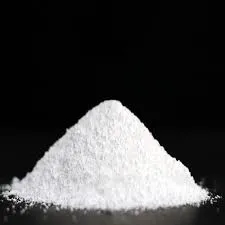Chemicals Used in Wastewater Treatment An Overview
Wastewater treatment is a critical process that aims to remove contaminants from sewage and industrial effluents before they are discharged back into the environment or reused. This process typically involves a series of physical, biological, and chemical treatments, with chemicals playing a pivotal role in ensuring the effective removal of pollutants. Here’s an overview of some of the key chemicals used in wastewater treatment and their functions.
1. Coagulants and Flocculants
Coagulation and flocculation are essential processes in wastewater treatment that involve the agglomeration of suspended solids. Coagulation is the first step, where chemicals known as coagulants are added to destabilize colloidal particles. Commonly used coagulants include aluminum sulfate (alum) and ferric chloride. These substances neutralize the charge on particles, allowing them to clump together.
Following coagulation, flocculants are introduced to further promote the aggregation of particles into larger clusters, or flocs, which settle more easily. Polymers, both synthetic (like polyacrylamides) and natural (like starch), are frequently used as flocculants, enhancing the sedimentation process and improving the efficiency of solid removal.
Disinfection is a crucial step in wastewater treatment, especially for effluents that will be reused or discharged into recreational water bodies. Chlorine is one of the most widely used disinfectants because of its effectiveness in killing bacteria, viruses, and pathogens. However, to mitigate the formation of harmful chlorinated by-products, alternative disinfectants like ozone and ultraviolet (UV) light are increasingly being adopted.
Ozone is a powerful oxidizing agent that helps in breaking down organic pollutants and is effective in disinfection. UV treatment, on the other hand, uses ultraviolet light to inactivate microorganisms without the addition of chemicals, thereby avoiding the issues associated with residual chlorine.
what chemicals are used in wastewater treatment

3. pH Adjusters
The pH level of wastewater is a critical factor that can influence the efficacy of both coagulation and disinfection processes. Chemicals such as sulfuric acid and sodium hydroxide are often used to adjust pH levels to an optimal range. Acidic or alkaline conditions can enhance the solubility of certain pollutants, making them easier to remove in subsequent treatment steps.
4. Precipitating Agents
Precipitation is often used for removing dissolved metals and phosphates from wastewater. Commonly used chemicals in this process include lime (calcium hydroxide) and sodium carbonate. These agents react with dissolved substances to form insoluble compounds that can then be easily removed through sedimentation.
5. Nutrients
In biological treatments, particularly in activated sludge systems, nutrients such as nitrogen and phosphorus are often added to enhance microbial growth. These nutrients are essential for the proliferation of bacteria that degrade organic matter. While nitrogen can be supplied in the form of ammonia, phosphorus is often added as phosphates.
Conclusion
The use of chemicals in wastewater treatment is vital for achieving high-quality effluent that meets regulatory standards. By employing a wide range of chemical agents—coagulants, disinfectants, pH adjusters, precipitating agents, and nutrients—wastewater treatment plants can effectively remove contaminants from water, ensuring environmental protection and public health. As technology advances and environmental regulations become stricter, ongoing research and development will likely lead to the discovery of more efficient and sustainable chemical treatments in the wastewater industry.

